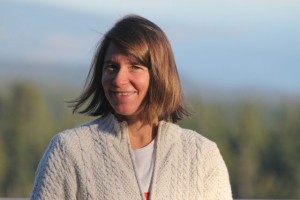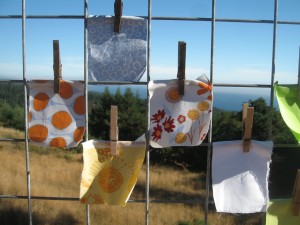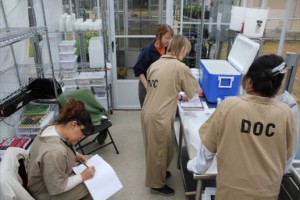
Sometimes the challenges of the planet seem too big, too complex. What can I do? What is my role to play? My late friend, John Armer, used to say, “Our job is to leave the sandbox cleaner than when we found it.” I have always liked this simple yet poignant saying.
I am a textile designer by trade. For years, I designed products for mass markets — Walmart, Target, etc. I loved my job. Creating patterns and designs is total joy for me. In 2004, I got a call from a competitor who wanted me to come work for them.However, I couldn’t do it. It didn’t feel right. It felt like a step sideways. It was a blessing though, because it got me thinking. What is the next step? What does it look like?
It was around this same time that I walked into a mass market store and found a sea of check-out stands, all filled with customers, all with baskets filled with stuff. All I saw was a glacial-size flow of landfill. Cheap stuff to be enjoyed briefly and then discarded. It was in that moment that it hit me—I was making pretty landfills for a living!
Determined to have my life’s work be something I could be proud of, it was on that day that I started down the road that would ultimately lead to the creation of Harmony Art Organic Design — an independent, printed organic fabric company. I am happy to report that six and a half y ears later, colorful printed organic cotton is no longer an anomaly but a growing market segment.
ears later, colorful printed organic cotton is no longer an anomaly but a growing market segment.
It is my sincere belief that for the “sandbox” to get collectively cleaner (or remain dirty and continue to inherit more debris) there is a magic shovel. No, I can’t solve poverty, climate change, financial exploitation, or war. What I can do (and what everyone on the planet can do) is to look at my own life. What contribution am I making with my life’s work? What about your contribution? I made the decision to walk away from a steady paycheck to create a new, healthier fabric option for people and businesses. I don’t expect you to quit your job and start your own company — that’s extreme. But I do think if we each took a good hard look at the results of our life’s work, and simply focused on creating the best possible product (or outcome) for the world, the change would be explosive and powerful.
Continue reading... →



